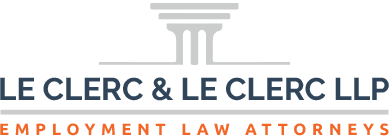According to a proposal made by the federal Department of Labor (DOL), the agency intends to revise how independent contractors are classified under law. The proposed rule would significantly alter the most recent definition, which was finalized in 2021. Should the DOL’s newest proposal be implemented, it will significantly reduce the number of workers who can be classified as independent contractors nationwide.
For many workers, this would be a net benefit. However, it is still a significant change. It is in your best interest as an independent contractor to understand how the update could affect you and what it may mean for your future.
How the New Rule Could Change Federal Law
Currently, independent contractors are defined based on the DOL’s 2021 rule. This rule outlines five factors, including two “core” factors, that are used to determine if a given worker is an independent contractor. The core factors are:
- The amount and type of control the worker has over their work
- The worker’s opportunity to make a profit or loss depending on their skills
If a worker has significant control over how, where, and when they do their work, and if they stand to gain or lose depending on the quality of their work, the DOL’s current rule states there is a substantial likelihood that they are a contract. If there is still doubt, the DOL considers the other three factors:
- The amount of skill the work calls for
- The permanency of the working relationship
- Whether the work is “part of an integrated unit of production”
Under these rules, “gig economy” workers are generally considered independent contractors due to the core factors test. However, the DOL has determined that the current rule is inconsistent with current judicial precedent and the Fair Labor Standards Act (FLSA).
The proposed rule is intended to resolve these issues. It would institute a new collection of six factors, which are intended to be given equal weight. These factors include:
- Whether the worker’s managerial and negotiative skill impacts their opportunity for profit or loss
- Whether the employee is making independent investments into their work
- The permanency of the working relationship
- The amount of control the worker has over their work
- Whether the work they perform is integral to the employer’s business
- Whether the worker needs specialized skill and initiative to advance their business
These new factors are more specific and place a much heavier emphasis on the entrepreneurial spirit of the worker. The intention of this rule is to ensure that workers who genuinely wish to run their own businesses can remain independent contractors, while preventing employers from misclassifying workers to cut down on benefit and overtime costs.
How the New Rule Compares to California Laws
If the DOL finalizes the independent contractor rule, it will go into effect nationwide. However, it may not have as much of an impact in California as it will in other states. This is because the state has implemented a number of laws in recent years to restrict how companies may classify their workers.
First, Assembly Bill (AB) 5, which was implemented in 2020, codified the ABC test to determine whether a worker can be classified as an independent contractor:
- “The worker is free from the control and direction of the hiring entity in connection with the performance of the work.”
- “The worker performs work that is outside the usual course of the hiring entity’s business.”
- “The worker is customarily engaged in an independently established […] business of the same nature as that involved in the work performed.”
This law is stricter than the current federal rule, but the DOL’s proposed rule would tighten the definition further.
In addition, the passage of Proposition 22 added a major loophole to AB 5, allowing “app-based drivers” to continue to be classified as independent contractors despite the ABC test. If the DOL implements its proposed rule, this loophole would be closed, and California gig economy workers would finally be considered employees, not contractors.
How Will the New Law Affect You?
The DOL rule is not intended to force entrepreneurs to accept W-9 employment if they don’t want it. If you are satisfied as an independent contractor and do not want the possible restrictions of being a standard employee, the possible change should not affect you. However, the law will benefit many workers currently classified as contractors.
Independent contractors are not protected under the federal Fair Labor Standards Act (FLSA). These workers are considered to be their own employers, and the people paying them are their clients. As such, they are responsible for providing their own health insurance and negotiating contracts that provide them with fair pay. In return, they are supposed to receive the flexibility to pick and choose their clients, negotiate their rates, and get their work done on their own schedule.
Unfortunately, many gig workers currently receive all the drawbacks of independent contractorhood without the benefits. They may only be able to work for one or at most two companies, they cannot negotiate the rates at which they are paid, and they are restricted to working when demand is high. If the new DOL rule is implemented, though, this would change. They would receive the rights guaranteed eny employee, including health insurance, overtime pay, and minimum wage.
Expert Legal Assistance to Fight Employment Misclassification
While the DOL hasn’t finalized its new rule, it is likely that a version of the regulation will be implemented in the next year. In the meantime, many independent contractors around California can still rely on AB 5 to help them pursue fair employment.
If you believe you have been misclassified as an independent contractor, you can get help to pursue fair employment under the FLSA and AB 5. At Le Clerc & Le Clerc LLP, we can help. Learn more about how our California employment law firm can help you protect your employee rights by scheduling your free consultation today.
